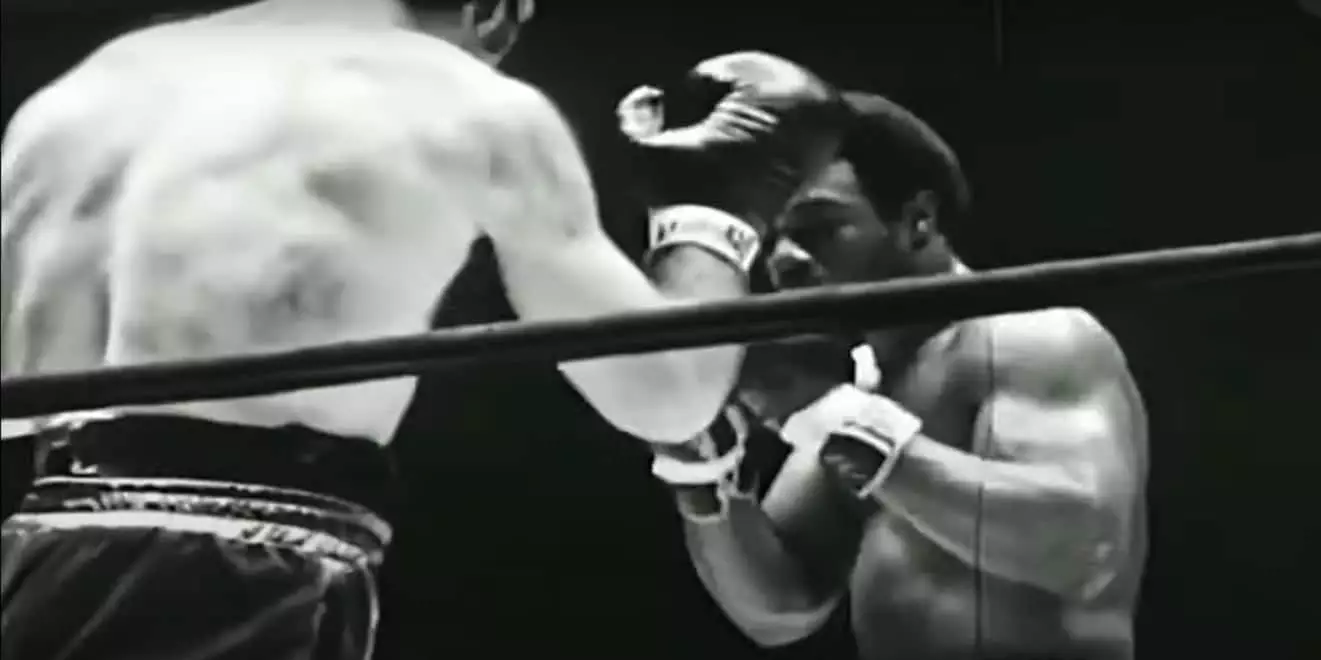The world of professional boxing has long been intertwined with the realms of entertainment and celebrity, creating narratives that extend beyond the ring. A poignant instance of this theatrical crossover can be found in the story of George Foreman and Jack O’Halloran, both of whom experienced significant acclaim in their respective fields and whose careers were marked by a fateful encounter that has tantalized boxing enthusiasts for decades. It was in 1970, at Madison Square Garden, that these two titans—one a burgeoning champion and the other a future star of the silver screen—faced off in what would become a notable match in boxing history.
On that fateful day, the atmosphere of Madison Square Garden buzzed with anticipation as fans gathered to watch George Foreman, then a 21-year-old heavyweight with immense potential, take on Jack O’Halloran. The two fighters, both towering figures in their own right, delivered a contest that can be characterized as a gritty battle of endurance and skill. In the early rounds, they exchanged blows on equal footing, giving spectators a glimpse of what made each fighter formidable.
Foreman’s raw talent and explosive power were matched against O’Halloran’s experience and determination, enhanced by his background in bouts against established fighters like Joe Bugner and Carl Gizzi. The defining moment came in the fifth round, when Foreman delivered a knockout punch that altered the course of not only the match but also the trajectories of both men’s lives. While Foreman emerged victorious, O’Halloran’s assertion that he was stopped prematurely after getting back to his feet adds an intriguing layer to the story, showcasing the fine line between triumph and defeat in the perilous world of boxing.
In the aftermath of their fight, Foreman continued his upward trajectory in boxing, going on to achieve legendary status with victories over the likes of Joe Frazier and Ken Norton. O’Halloran, meanwhile, experienced a career shift as he transitioned from boxing to acting, becoming beloved for his portrayal of the character ‘Non’ in the iconic films “Superman” and “Superman II.” This transition underscores the multifaceted nature of personal identity in the face of public perception—while Foreman became synonymous with athletic prowess, O’Halloran cultivated a persona that endeared him to cinema audiences.
The divergence of their paths prompts reflection on the nature of success and legacy in a sport as unforgiving as boxing. O’Halloran’s venture into acting showcased his versatility; he was not merely defined by his athletic career but also by his ability to reach audiences through storytelling. Ironically, he might have been on the verge of becoming a major boxing name had he seized the opportunities for bigger fights, such as his long-desired bout against the legendary Muhammad Ali. Instead, what emerged was a reconciliation of his boxing legacy with his cinematic achievements.
Recently, at the age of 81, O’Halloran opened up about his experiences in a conversation with Slater’s Boxing. His reflections provide insights into both the boxing world of the 1970s and his own aspirations as a fighter. Despite expressing a desire to take on Muhammad Ali, he acknowledged the twists of fate that redirected his path. His post-fight commentary sheds light on a broader theme within sports: the unpredictability of destiny.
Through O’Halloran’s recounting of his match with Foreman, we gain glimpses into the emotional weight of such moments. The frustration of being stopped despite feeling capable of continuing resonates with those familiar with the trials of competitive sports. This poignant reminiscence highlights not just personal disappointment but also the shared experience among athletes—success and failure often intertwined in the struggle to claim a legacy.
Ultimately, the intersection of O’Halloran’s boxing career and Foreman’s subsequent fame continues to fascinate fans and historians alike. The journeys of both individuals illuminate not only the realities faced by professional athletes but also the expansive nature of personal growth and reinvention. While Foreman remains etched in the annals of boxing history as a two-time heavyweight champion, O’Halloran’s transition into acting offers a reminder that the human experience is multifaceted, rich with opportunities to redefine one’s identity.
The meeting of George Foreman and Jack O’Halloran serves as a testament to how paths can cross in unexpected ways and how narratives evolve over time. In the grand tapestry of sports and entertainment, their story resonates, showing that, at times, greatness is as much about what you do with your life after the spotlight dims as it is about the moments you shine brightest in it.

